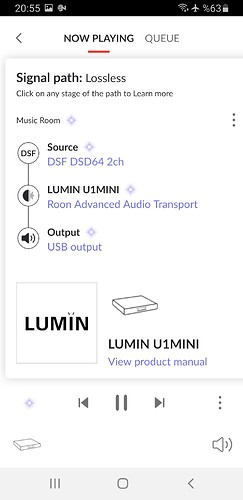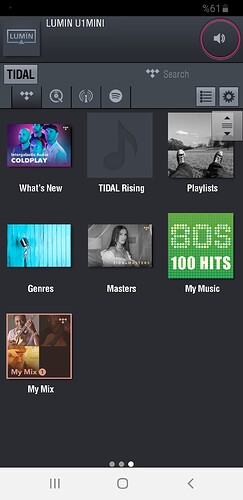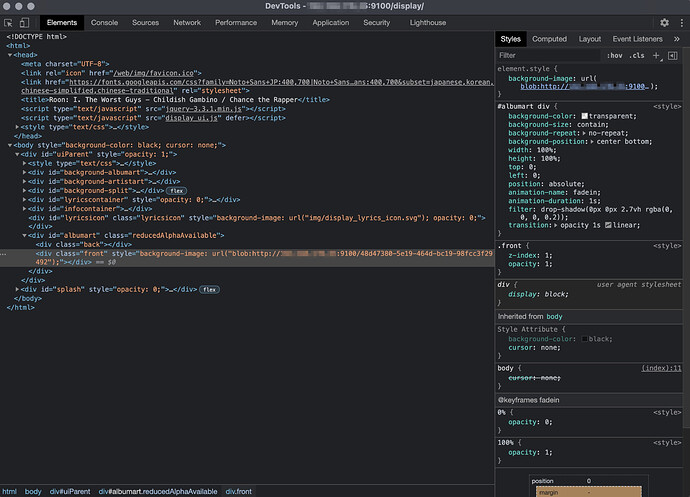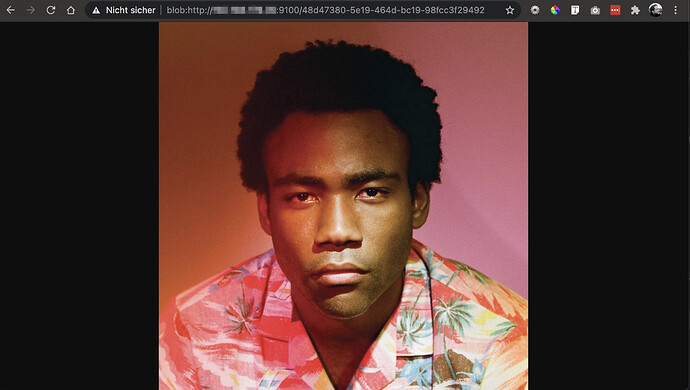Dsd and resolution information appeared on the Lumin screen. Also Qutest dsd turned on the light. Do you have any better connection advice? Thanks
Now you’re using the LAN connection?
You can try let Roon resample all income to DSD256 (that’s the maximum, which the U1 mini accepts). Don’t let the lumin resample, while using Roon.
It sounds like still using Airplay which has me very confused as to how dsd could be working over Airplay.
Admittedly I have not tried to see what happens over Airplay on my Lumin T2 but will now do so out of curiosity!
Then you are not using AirPlay.
This sounds like you have already set it up correctly. Please post a signal path screenshot to confirm.
Hi Peter,
Yes. I guess I’m wrong. This is not airplay. The airplay logo on the Lumin interface deceived me. I think this is the best scenario with Lumin in it.
Because Lumin app is not supposed to be used for status display and playback (other than changing settings) when you’re using Roon to playback.
The technical reason is this: Unlike all other network music sources with their associated servers, Roon Core does not provide a http url for current album art for display [edit: to our RAAT implementation]. Therefore Lumin app does not have an image to display when you’re using Roon.
Hi Peter,
Roon does create a URL for the album art when using the web display function, and it can be accessed directly by an authorised browser:
But enabling this would be a hack and I guess, for Roon partners / integrators (like Lumin) there should be a dedicated call to enable such a feature. Maybe in an upcoming version?
Good to know. I don’t think that’s directly available to our implementation, but I will need to look into this in the future.
@wklie Hi. Just out of curiosity: When disabling Lumin volume control for critical listening, is there any technical difference if Leedh processing is turned off first? Or is it the identical result and only Volume control needs to be disabled?
If volume control is disabled, it does not matter whether the Leedh option is on or off.
If volume control is enabled and you’re using digital output, the Leedh option controls the digital volume algorithm.
If volume control is enabled and you’re using analog output from Lumin X1 / T2 / S1 (with ESS DAC chips 9038PRO / 9028PRO / 9018S), the Leedh options controls whether you’re using standard ESS on-chip digital volume, or Lumin proprietary implementation of Leedh Processing Volume taking specific advantage of ESS.
 Thank you for the clarification.
Thank you for the clarification.
Hi Peter…to complete this picture, if volume control is enabled but set at 100, does that have the same effect as disabling it? I seem to recall this being the case before Leedh came along. I’m asking in reference to the D2 but guess others might be interested in other models.
For D2 analog output with Analog Output Level set to Normal, yes.
For U1 (MINI), no because enabling volume control forces DSD to PCM conversion for digital output.
Thanks Peter!
Good evening, I’m new to the group but I want to tell you about my experience, with a thousand doubts. I only listen to liquid music with a Qobuz hires subscription on Fastweb ultra-fast fiber network and shielded cat8 LAN cables. My system consists of:
- Lumin U1 mini streamer
- Copland 215 DAC
- Copland cta 408 tube amplifier
- B&W 702 s2 signature speakers.
Enticed by an acquaintance who has a hifi shop and who, for the liquid, only uses Roon connected as an endpoint to an (excellent) steamer, taking advantage of a trial of Roon (3 euros for 3 months!) I installed Roon core on a NUC Asus intel I7, exclusively dedicated to Roon.
I’ve been trying these three variations on the theme for almost a month now:
- Lumin streamer connected via USB to the DAC and Lumin app
- NUC (with Roon core), Lumin Streamer endpoint (Roon ready) connected to the DAC via USB, with Roon app
- NUC connected directly to the DAC via USB, with Roon app.
I would like to point out that the DAC is not Roon ready but is still seen by Roon as an Armero device and used as an output peripheral.
I’m trying to convince myself that the solutions that use Roon (2 and 3) are the best, especially so as not to ruin the purchase of the Lumin which I consider to be an excellent streamer, but believe me, in my ears I can’t hear enough differences to convince me of the goodness of one solution compared to another. 3 has a slight advantage, if only because, in terms of psychoacoustics, it is the one that has fewer “nodes” than the others.
Reading this discussion I see that there is no clear preference in the use of Roon compared to the more… traditional ones
Please try one more configuration. Disconnect USB from Lumin to DAC. Use a 1.5m coax cable from Lumin to the DAC.
But with Roon and Lumin as end point?
Use Lumin app first.
Thanks, I’ll try this setup too
I tried this setup but to my ears I have the impression that the system sounds better with the USB connection rather than with the coaxial cable. Using Roon and the lumin as end point, how should the MQA option be set on the Lumin (Off, Core Decode or Pass Through)? My DAC (Copland) is not MQA compatible and how do I set the MQA parameters on Roon?
Thank you



